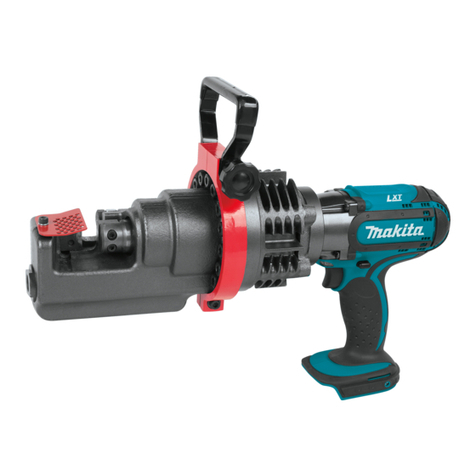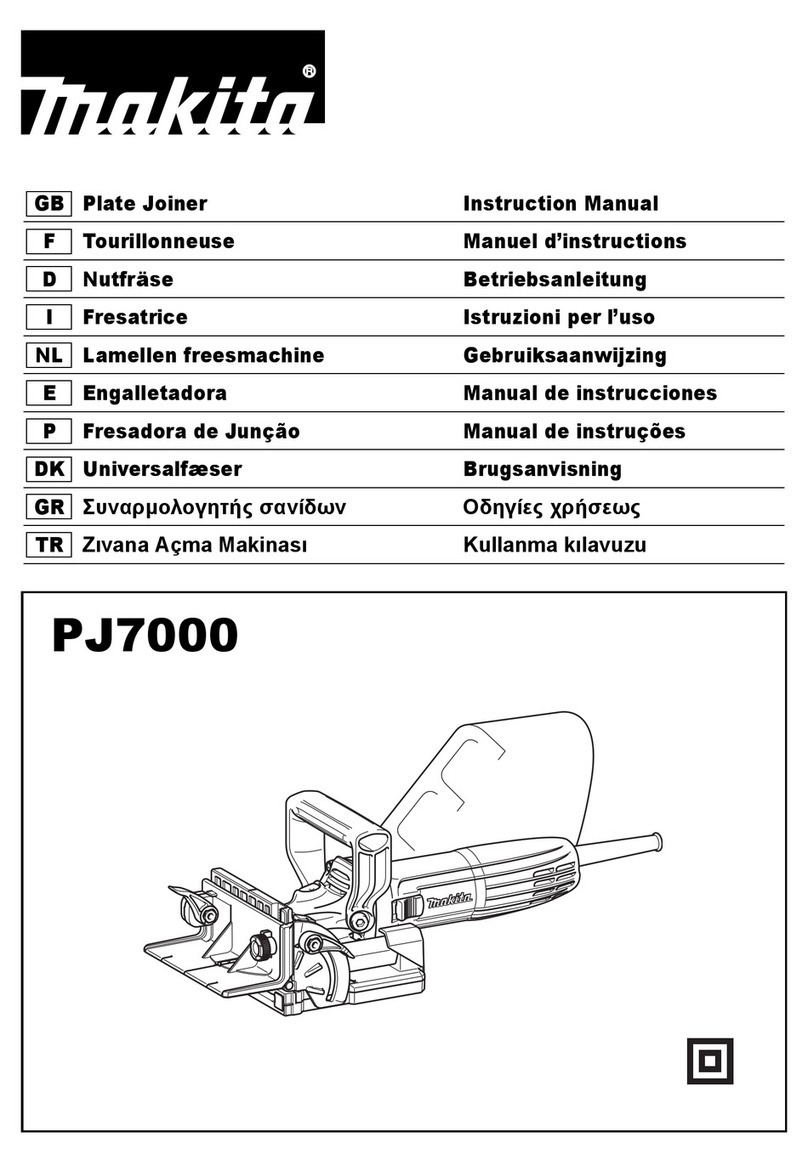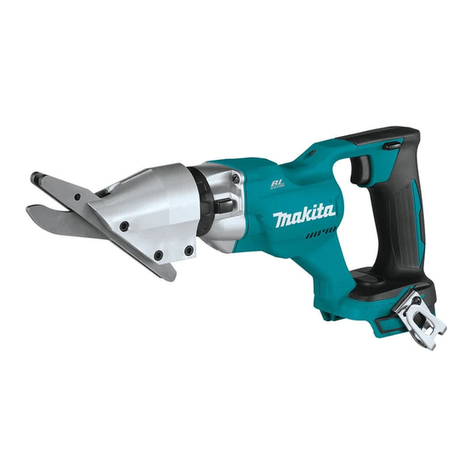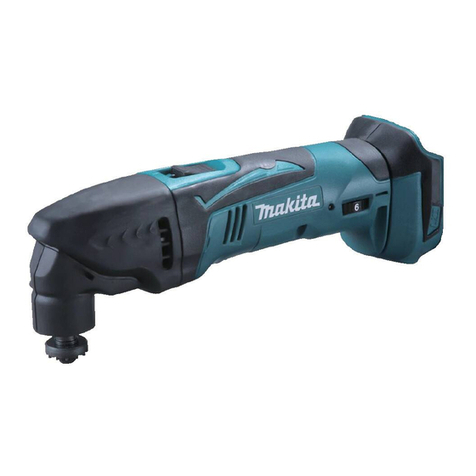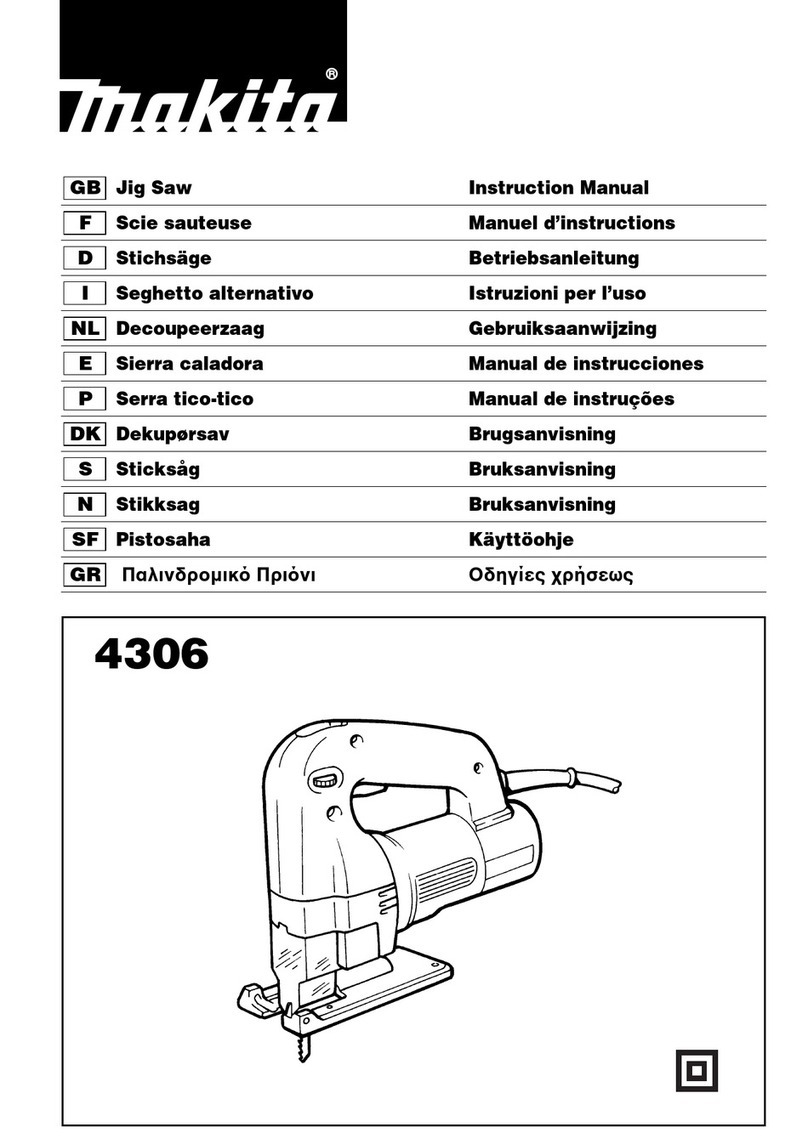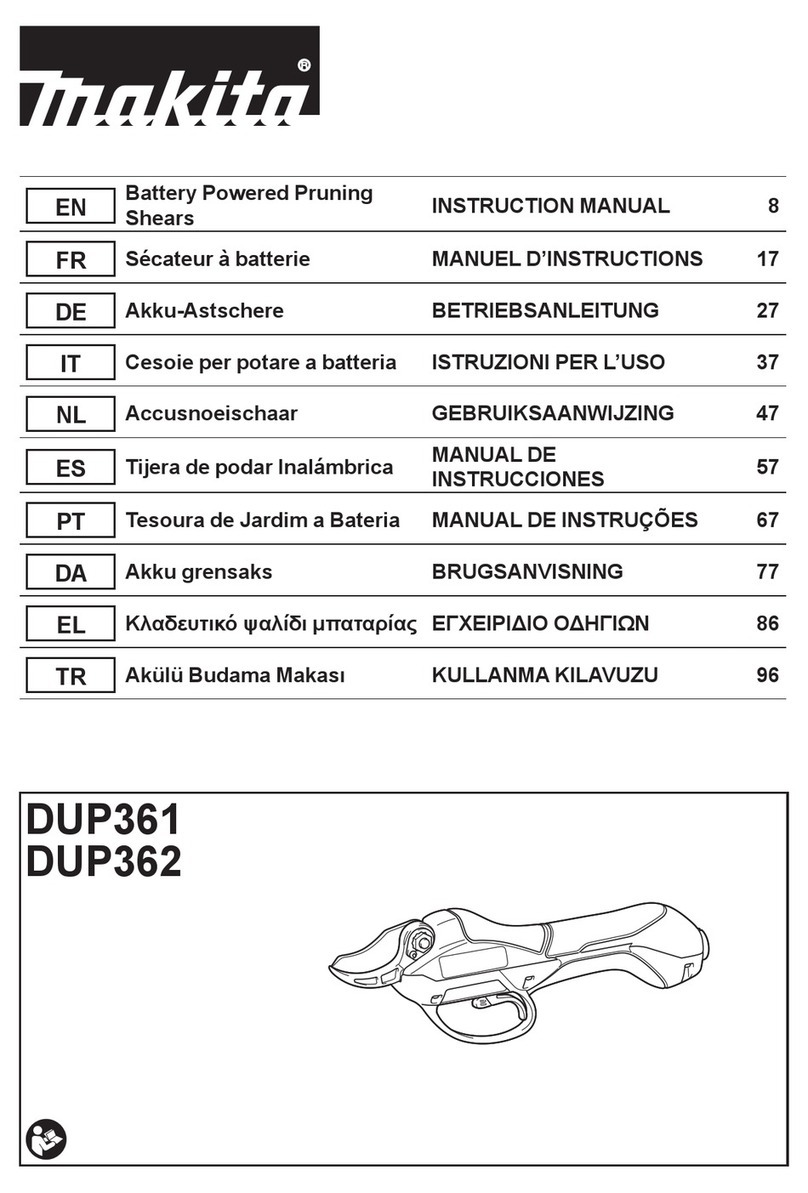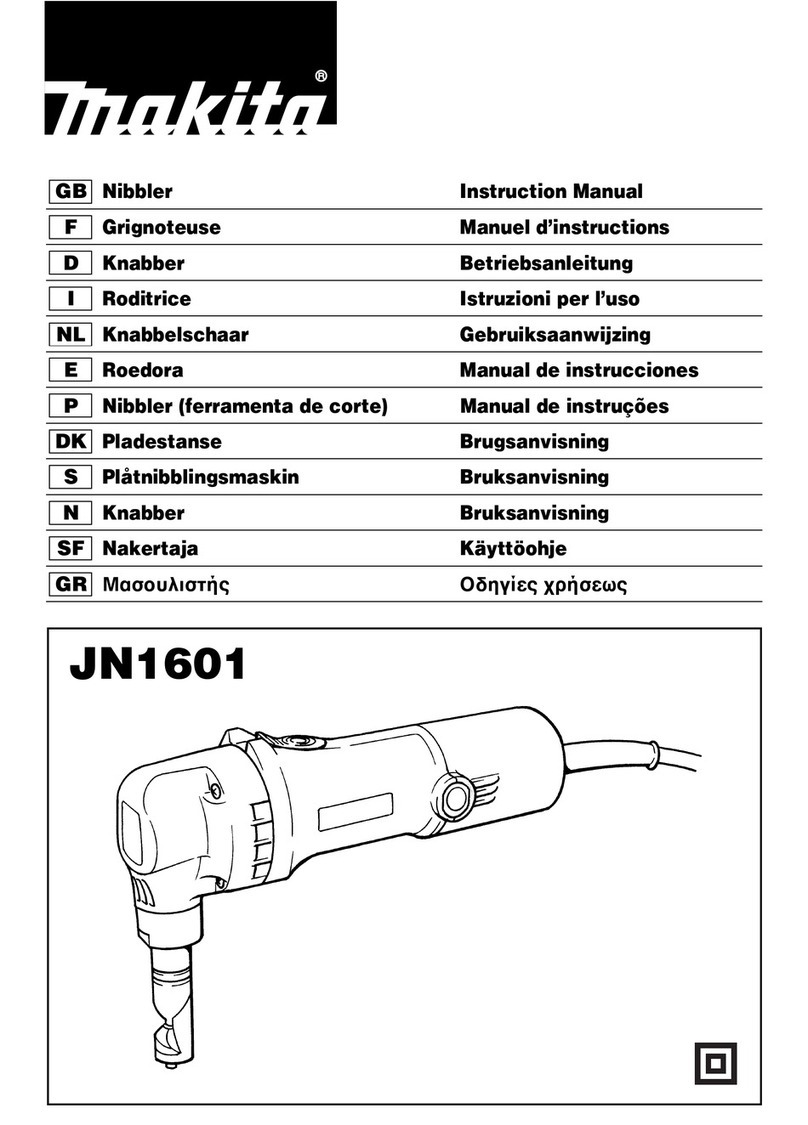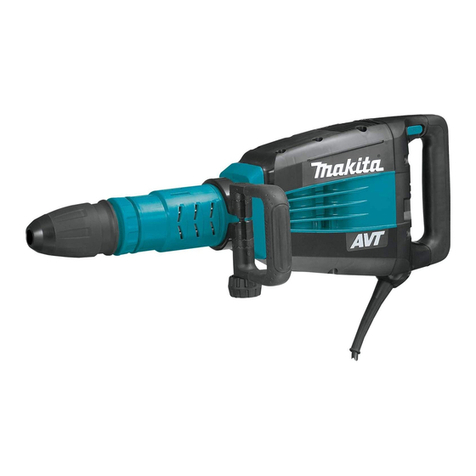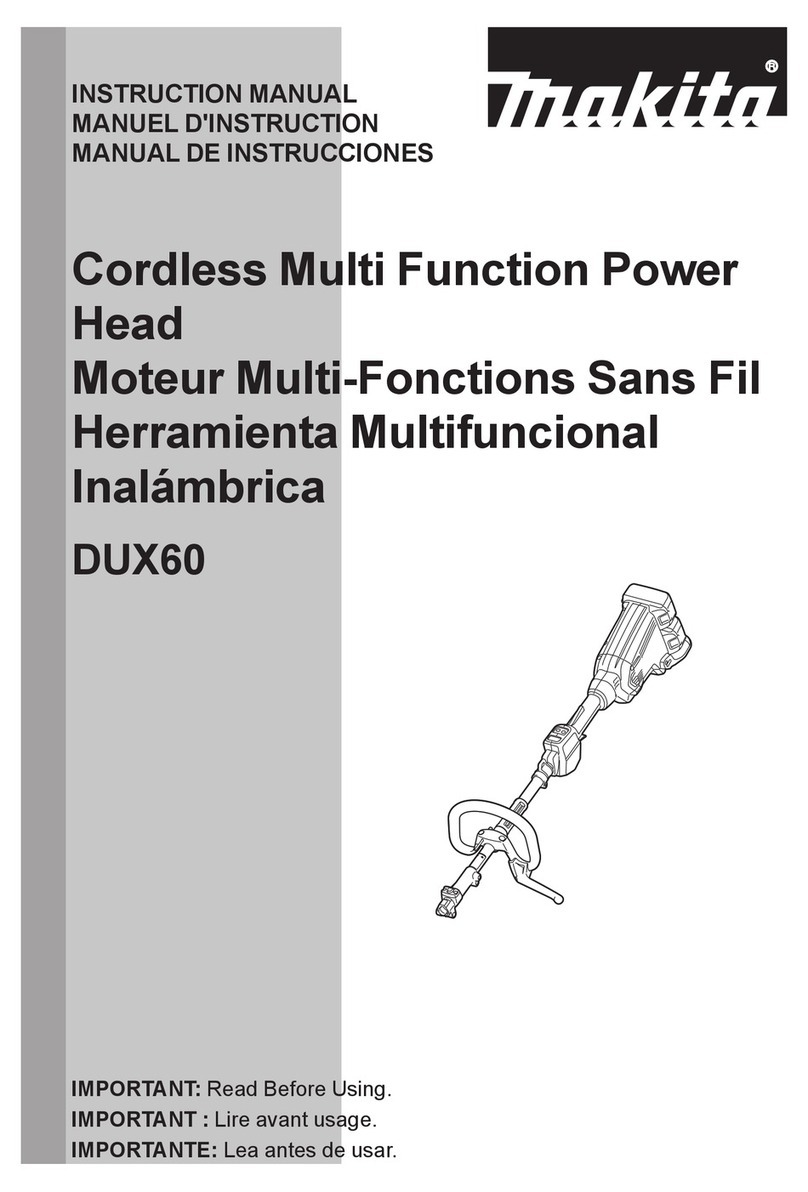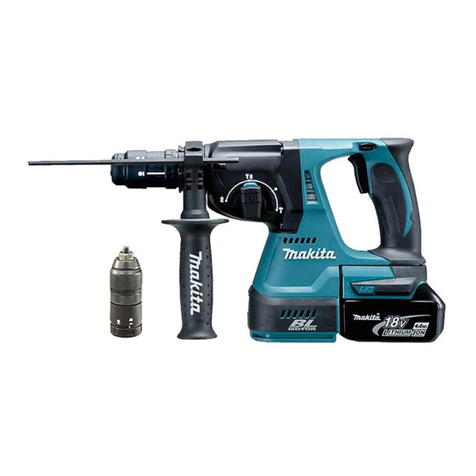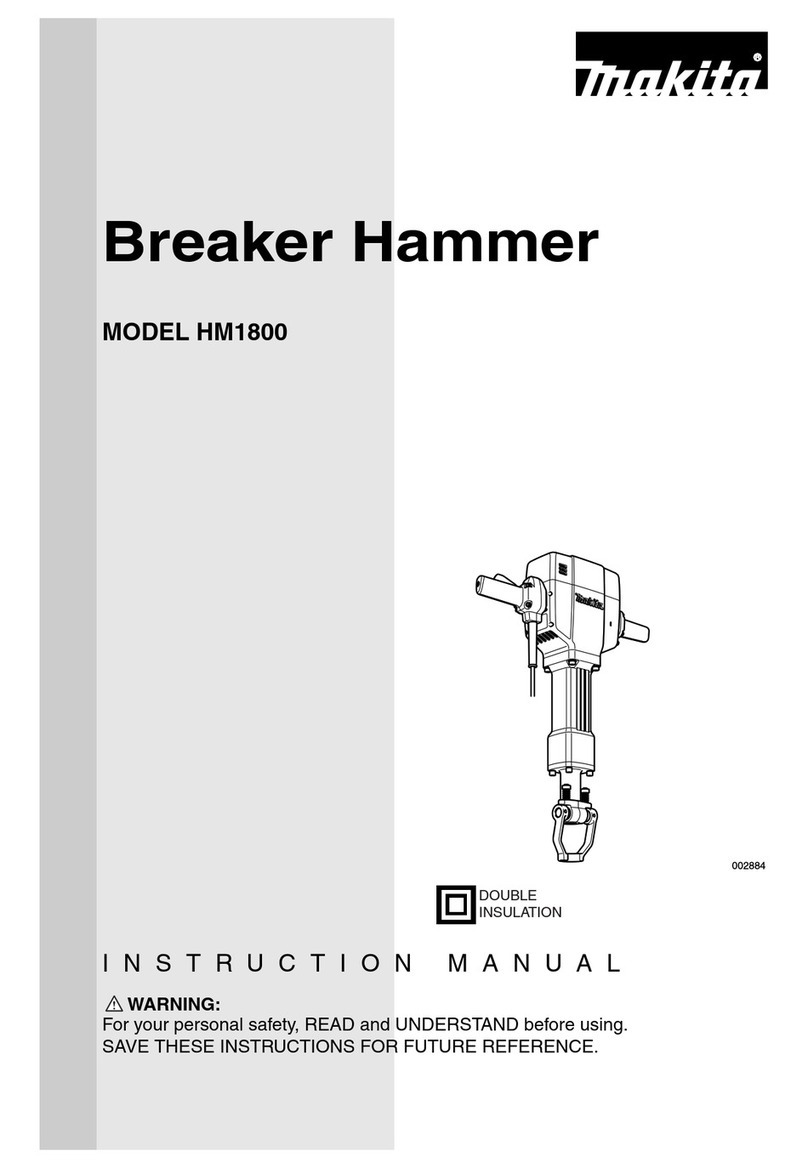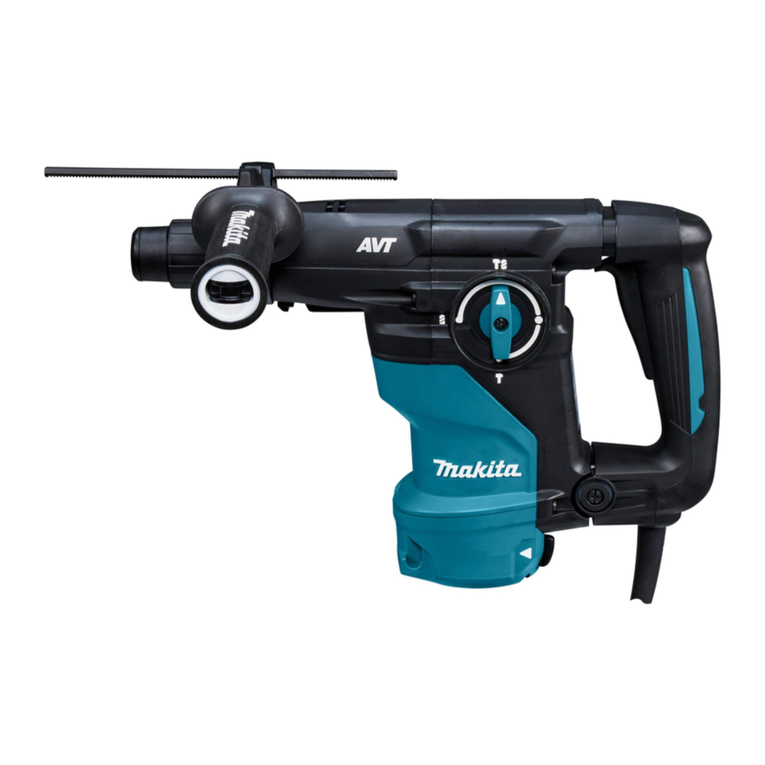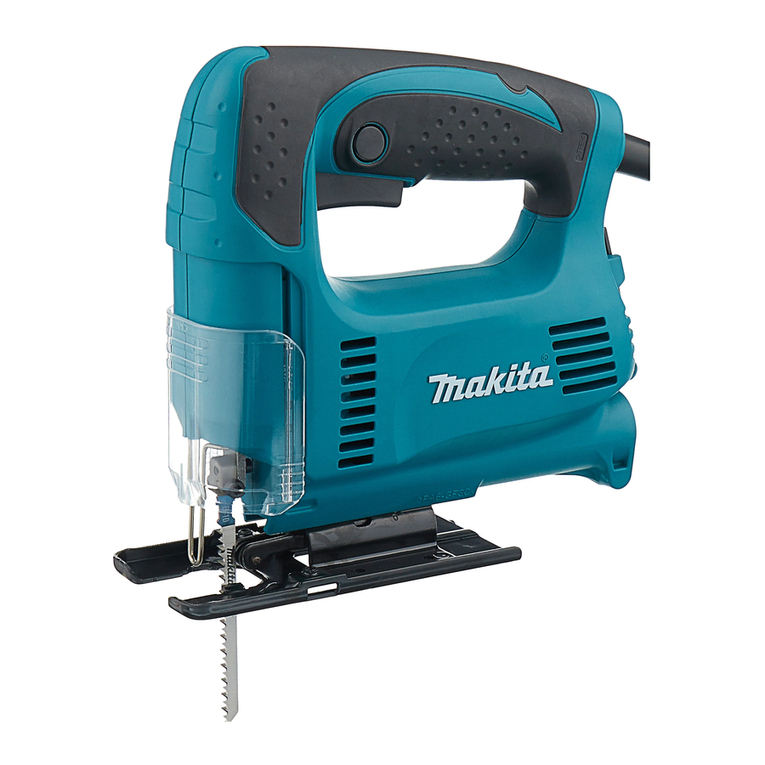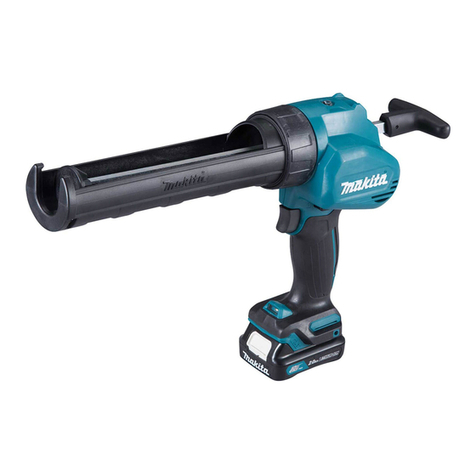
25
9. Pas op dat u niet in elektrische draden snijdt. Dit
kan een ernstig ongeluk door elektrische schok
veroorzaken.
BEWAAR DEZE VOORSCHRIFTEN.
WAARSCHUWING:
LAAT NIET uw vertrouwdheid met het gereedschap
(na regelmatig gebruik) omslaan in slordigheid of
onachtzaamheid omtrent de strikt na te leven
veiligheidsvoorschriften voor dit product.
VERKEERD GEBRUIK of het niet naleven van de
veiligheidsvoorschriften in deze gebruiksaanwijzing
kan leiden tot ernstige verwondingen.
ENC007-8
BELANGRIJKE
VEILIGHEIDSVOORSCHRIFTEN
VOOR DE ACCU
1. Lees alle voorschriften en waarschuwingen op
(1) de acculader, (2) de accu, en (3) het product
waarvoor de accu wordt gebruikt, aandachtig
door alvorens de acculader in gebruik te nemen.
2. Neem de accu niet uit elkaar.
3. Als de gebruiksduur van het gereedschap erg
kort is geworden, staakt u dan onmiddellijk het
gebruik. Er bestaat kans op oververhitting, met
gevaar voor brand of zelfs een explosie.
4. Als er accuvloeistof in uw ogen komt, wast u die
dan onmiddellijk uit met volop water en
raadpleeg dan onverwijld een arts. Uw
gezichtsvermogen zou ernstig aangetast kunnen
worden.
5. Voorkom kortsluiting van de accu:
(1) Raak de accuklemmen nooit aan met een
geleidend materiaal.
(2) Bewaar de accu niet in een bak waarin
andere metalen voorwerpen zoals spijkers,
munten e.d. worden bewaard.
(3) Stel de accu niet bloot aan water of regen.
Kortsluiting van de accu kan oorzaak zijn van
een grote stroomafgifte, oververhitting,
brandwonden, en zelfs defecten.
6. Bewaar het gereedschap en de accu niet op een
plaats waar de temperatuur tot 50°C of hoger kan
oplopen.
7. Werp de accu nooit in het vuur, ook niet wanneer
hij zwaar beschadigd of volledig versleten is. De
accu kan namelijk ontploffen in het vuur.
8. Wees voorzichtig dat u de accu niet laat vallen
en hem niet blootstelt aan schokken of stoten.
9. Gebruik nooit een beschadigde accu.
10. Volg bij het wegwerpen van de accu de
plaatselijk geldende voorschriften.
BEWAAR DEZE VOORSCHRIFTEN.
Tips voor een maximale levensduur van de accu
1. Laad de accu op voordat hij volledig ontladen is.
Stop het gebruik van het gereedschap en laad de
accu op telkens wanneer u vaststelt dat het
vermogen van het gereedschap is afgenomen.
2. Laad een volledig opgeladen accu nooit opnieuw
op.
Als u de accu te veel oplaadt, zal hij minder lang
meegaan.
3. Laad de accu op bij een kamertemperatuur van
10°C – 40°C. Laat een warme accu afkoelen
alvorens hem op te laden.
4. Laad de accu zeker elk half jaar een keer op, ook
als u deze geruime tijd lang niet gebruikt.
BESCHRIJVING VAN DE FUNCTIES
LET OP:
• Zorg altijd dat het gereedschap is uitgeschakeld en de
accu ervan is verwijderd alvorens de functies op het
gereedschap af te stellen of te controleren.
Aanbrengen en verwijderen van de accu (Fig. 1)
LET OP:
• Schakel altijd het gereedschap uit voordat u de accu
aanbrengt of verwijdert.
•Houd het gereedschap en de accu stevig vast
wanneer u de accu aanbrengt of verwijdert. Als u
het gereedschap en de accu niet stevig vasthoudt, zou
er iets uit uw handen kunnen glippen, met gevaar voor
schade aan het gereedschap of de accu en eventuele
verwonding.
Om de accu te verwijderen, schuift u deze uit het
gereedschap los terwijl u de knop voorop de accu
ingedrukt houdt.
Voor het aanbrengen van de accu plaatst u de tong van
de accu in de groef van de behuizing en schuift u de
accu op zijn plaats. Schuif de accu er altijd volledig in
totdat die op zijn plaats vast klikt. Wanneer de rode
indicator op de bovenkant van de knop nog zichtbaar is,
zit de accu niet volledig erin.
LET OP:
• Schuif de accu volledig erin totdat de rode indicator niet
meer zichtbaar is. Als u dit nalaat, zou de accu uit het
gereedschap kunnen vallen en uzelf of anderen
kunnen verwonden.
• Druk de accu er niet met kracht in. Als de accu er niet
soepel in gaat, houdt u die waarschijnlijk in de
verkeerde stand.
Accubeveiligingssysteem (Fig. 2)
Het gereedschap is voorzien van een
accubeveiligingssysteem. Dit systeem kan automatisch
de stroomtoevoer naar de motor afsluiten om de
levensduur van de accu te verlengen.
Het gereedschap kan tijdens gebruik automatisch
stoppen wanneer het gereedschap en/of de accu aan
één van de volgende omstandigheden wordt
blootgesteld:
• Overbelasting:
Als het gereedschap wordt gebruikt op een manier die
een abnormaal hoge stroomsterkte vergt.
In dat geval schakelt u het gereedschap uit en verhelpt
u de oorzaak van de overbelasting nadat het werktuig
gestopt is. Dan schakelt u het gereedschap weer in om
het te herstarten.
Als het gereedschap niet start, kan de accu oververhit
zijn. In dat geval laat u de accu afkoelen voordat u het
gereedschap opnieuw inschakelt.
• Onvoldoende accuspanning:
Als de resterende accuspanning onvoldoende is, zal
het gereedschap niet starten. In dat geval verwijdert u
de accu en laadt u die opnieuw op.
